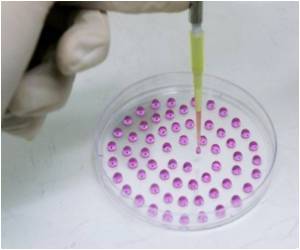The first genome-wide sequencing of a DNA modification molecule called 5-hydroxymethylcytosine (5hmC) in embryonic stem cells has been generated by ULCA researchers.

"Any way you can control genes will be hugely important for human disease and cancer," said Steven E. Jacobsen, a professor of molecular, cell and developmental biology in the Life Sciences and a Howard Hughes Medical Institute investigator. "Cancer is generally a problem of genes being inappropriately turned off or mutated, like tumor suppressors genes, or genes that should be off getting switched on."
The study appears in the July issue of the journal Genome Biology.
5hmC is formed from the DNA base cytosine by adding a methyl group and then a hydroxy group. The molecule is important in epigenetics - the study of changes in gene expression caused by mechanisms other than changes in the DNA sequence - because the newly formed hydroxymethyl group on the cytosine can potentially switch a gene on and off, Jacobsen said.
The molecule 5hmC was only recently discovered, and its function has not been clearly understood, Jacobsen said. Until now, researchers didn't know where 5hmC was located within the genome.
"That is important to know because it helps you to understand how it is functioning and what it's being used for," said Jacobsen, who also is a researcher with UCLA's Jonsson Comprehensive Cancer Center. "We had known that DNA could be modified by 5hmC, but it wasn't clear where on the genome this was occurring."
Advertisement
In the study, Jacobsen found that 5hmC was associated with genes and tended to be found on genes that were active. The study also revealed that 5hmC was present on a type of DNA regulatory element, called enhancers, which help control gene expression. In particular, 5hmC was present on enhancers that are crucial for defining the nature of the human embryonic stem cells.
Advertisement
"If we can understand the function of 5hmC, that will lead to greater understanding of how genes are turned on and off and that could lead to the development of methods for controlling gene regulation," Jacobsen said.
Moving forward, Jacobsen and his team will seek to uncover the mechanism by which 5hmC is created from DNA methylation and how it becomes localized to particular areas of the genome, such as the enhancers.
Source-Eurekalert













